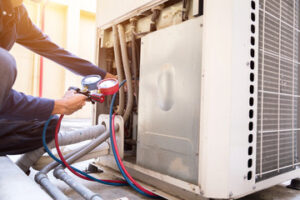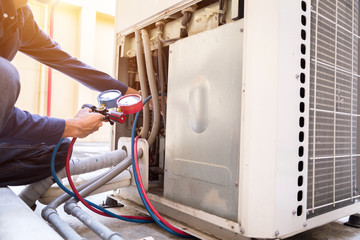When looking for an HVAC installation contractor, you should consider several things. A reputable contractor will be willing to discuss these details with you in advance, and they will be able to estimate the project’s cost. In addition to their initial price quote, a reliable contractor will also be able to provide you with a warranty on the system. Lastly, a trusted HVAC installation company will try to cover all bases, but some things cannot be assessed until they work on the project. 
HVAC Installation can install new and repair existing HVAC equipment according to manufacturer specifications, and they will repair or replace existing ductwork. HVAC equipment typically includes an air handler, condensing unit, thermostat, and ductwork. They can also upgrade your wiring, but a licensed electrician should be involved if you make major changes. This will ensure that your system is running properly after the HVAC installation. HVAC contractors may charge extra for the services of an electrical contractor, so you should carefully consider the work involved before hiring a contractor.
Choosing an HVAC installation contractor should involve surveying your current system and measurements. A qualified contractor can also recommend the best size system for your home. Depending on the size of your home, a contractor can recommend upgrading insulation or ductwork. The entire process can take anywhere from a day to a few days. Once you’ve decided on the right HVAC installation company, you’ll be on your way to a comfortable home.
Make sure you hire a qualified HVAC technician but don’t be afraid to look for other options. When selecting an HVAC installation company, ask for multiple estimates. Having multiple estimates will help you avoid major surprises. Getting several quotes ensures you’re getting a high-quality contractor. Lastly, remember to keep your new HVAC installation as up-to-date as possible. Your HVAC system is your home’s respiratory system, so regular maintenance is crucial to its overall health.
Remember to take measurements as carefully as possible to get the proper size for your home. Remember that a poorly sized HVAC unit will lead to premature wear and tear, increased energy bills, and inconsistent temperatures throughout your home. A qualified HVAC technician will perform load calculations to determine the right size for your home. A good way to find the right size is to check your home’s Heating Load Worth, which measures how much heat or cooling you need. In some cases, a home with adequate insulation may need a lower air conditioning capacity than it does. If you aren’t sure, check the SEER and Energy Star ratings.
A good HVAC installation company should be willing to offer various services, including routine maintenance, repairs, and new installations. During an installation, you will want to consider how many hours the HVAC installation company has worked in the past. Choosing a company that offers the most flexible hours to meet your needs is best. If you’re installing a new furnace, you can also hire an HVAC installation contractor to perform the installation. If the system breaks, you should expect a higher price than you’re used to.
HVAC installations are important for residential and commercial buildings. Your HVAC installation professional should be ASHRAE-certified. The ASHRAE Handbook provides detailed information about proper heating and cooling calculations. ASHRAE data is also helpful for design professionals. Most building codes don’t provide much information regarding HVAC design practices, but the UMC and IMC codes do.
The minimum requirement for licensure as an HVAC installation technician varies by state. In most cases, an HVAC installation technician must have a high school diploma or GED certificate. A community college or vocational school can provide the necessary training for this profession. If you want to get your hands dirty, you can even take advantage of an apprenticeship. An apprenticeship combines classroom training with hands-on training. However, it may be a better option if you’d rather learn the trade by completing an apprenticeship.
There are two types of heating and cooling coils: uncased and cased. A cased coil comes with an insulated cabinet. The uncased coil requires more work and preparation. Both types of coils are effective but require a higher installation level. A cased coil is preferred because it offers more versatility. An uncased coil can still be highly efficient if installed correctly. You should contact a company that offers both types.

